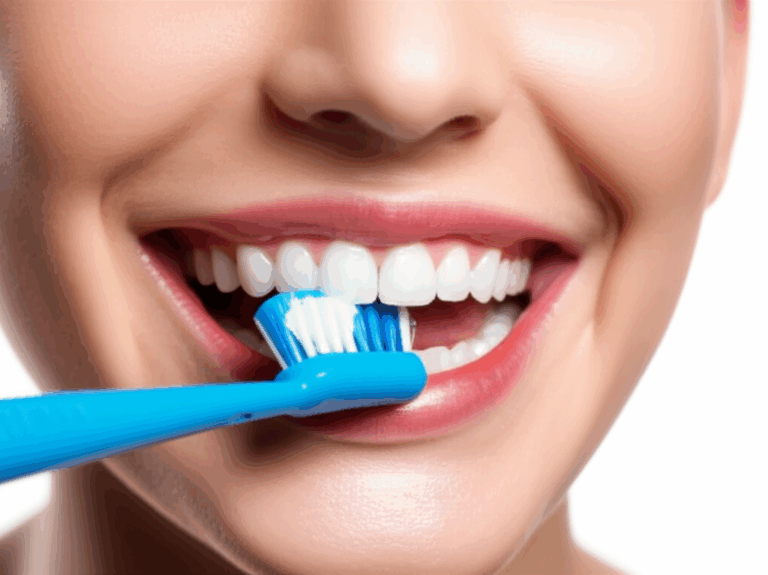
How Does Dental Problems Affect The Heart?
I always thought my mouth and the rest of me was two totally separate things. A toothache was just a toothache. If my gums bled? It just mean I need to brush a little harder. My heart, that was different, it was like the engine of my body. A big, important part that I connected to food, exercise, and my family history. It never, ever went through my head that how my teeth were could be a direct and bad thing for my heart. But then a normal check-up turned my whole world around and started me on a story I’m telling you today.
This isn’t just another health article full of dry, big science words. This is my story. It’s about the big wake-up call that made me see the super important link between your mouth health and your heart health. I’m going to tell you what I learned, the mistakes I did, and the simple, strong steps I took to protect my heart by taking care of my mouth first. If you ever ignored that little bit of pink in the sink or kept putting off a dentist visit, you should really read this. This info didn’t just change how I see things; it could of saved my life.
The Wake-Up Call: More Than Just a Toothache
For years, I was the kind of guy who thought, “if it’s not broken, don’t fix it” about my teeth. I brushed, on most days. I flossed, sometimes. I saw my gums bleed now and then, but I thought that was normal. My life was busy, and making a dentist appointment felt like a pain I could always do “later.”
My wake-up call didn’t come from a hurting tooth. It came from a blood pressure machine. During a check-up for a new life insurance, the nurse took my blood pressure. Then she did it again. She looked worried. “It’s a little high,” she said, trying to be calm. “You should go see your doctor about it.”
The doctor visit proved it. My blood pressure was always high, and my blood tests showed lots of C-reactive protein (CRP), which is a sign of swelling somewhere in your body. I was shocked. I wasn’t that overweight, I worked out some, and I thought I ate pretty good. My doctor started asking tons of questions, trying to find where this mystery swelling was coming from.
He asked about sore joints, stomach problems, and stress. Then he asked a question that was weird: “When was your last dentist appointment?”
I stopped. “A few years ago, maybe?” I said, feeling bad.
He leaned in, and he looked serious. “I want you to book a full check-up with your dentist, a really good one. Tell them we’re looking for any old infection or gum disease. The swelling in your body has to come from somewhere, and the mouth is a really common place people forget about.”
I left his office feeling all mixed up. My gums? Hurting my heart? It sounded like a crazy movie. But I was scared enough to do it. I made the appointment that same day, and that appointment would finally put all the pieces together.
Understanding the Connection: How Bad Stuff Travels from Your Mouth to Your Heart
My new dentist was very patient. After she looked at my teeth and took X-rays, she sat me down and explained the mouth-body thing in a way that I finally got. It wasn’t magic, it was just how your body works.
“Think of your gums like a fence between your mouth and your blood,” she said. “When they’re healthy, they make a strong wall around your teeth, keeping germs out.”
But when you got gum disease, that wall is broken.
Here’s what I learned, in simple words:
- It starts with Plaque: Your mouth has lots of germs. Most are fine. But when you don’t clean your teeth good, germs mix with sugar and make a sticky, clear stuff called plaque.
- Swelling is How the Body Fights: This plaque makes your gums mad, so they get swollen. This first part is called gingivitis. Your body is sending its little army to fight the germs, which is why your gums get red, puffy, and bleed easy. This was the “pink in the sink” I was ignoring for years.
- The Fence is Broken: When your gums are swollen and bleeding, they have tiny little cuts in them. This makes a direct road for germs in your mouth to get into your blood. This can happen every time you brush or even just eat. A little bit of germs in the blood isn’t a big deal for a healthy person, your body cleans it up.
- The Trip to the Heart: The problem is when this happens all the time because of gum disease that won’t go away. Some of these germs, like Porphyromonas gingivalis, are really bad. They travel through your blood and can stick to fatty stuff that’s already in the walls of your blood vessels, including the ones on your heart.
- Making the Fire Bigger: My dentist used a good example. “Imagine you have a little fire in your arteries—that’s the start of plaque from stuff like cholesterol. The germs from your mouth is like pouring gas on that fire.” They make the swelling in the artery wall worse, which can make the plaque bigger and more likely to break. That can cause a blood clot that gives you a heart attack or stroke.
All of a sudden, my high CRP levels made sense. My body wasn’t fighting some unknown sickness, it was in a small war all the time against the infection that was right in my gums.
Key Dental Problems That Put Your Heart in Danger
What I had wasn’t just simple gingivitis. Years of not caring let it get worse. The dentist showed me my X-rays and pointed to dark spots around the bottom of my teeth. “This,” she said, “is bone loss. You have moderate chronic periodontitis.” It was a scary thing to hear. I learned there are a few main bad guys in this story.
Gingivitis: The Early Warning
This is stage one, and you can fix it all the way. It’s your body’s first alarm. The signs are small and easy to not pay attention to, which is what I did.
- Red, puffy, or swollen gums.
- Bleeding when you brush or floss.
- Bad breath that won’t go away or a bad taste.
I thought bleeding just meant I was brushing really hard. I now know that healthy gums do not bleed. Bleeding is a sign that something is wrong, and it’s the first hint that germs can get into your blood.
Periodontitis: The Quiet Attacker
This is what you get when you don’t treat gingivitis. The swelling goes deeper, and your body’s own defense system starts to mess up. It tries to fight the germs but starts to destroy the gum and the bone that holds your teeth in.
- Pockets Get Made: The gums pull away from the teeth, making deep pockets. These pockets are impossible to clean with a normal toothbrush and they become a home for the worst germs. My dentist measured my pockets, some were 5-6 millimeters deep. Healthy is 1-3mm.
- Bone Loss: The germs and the forever swelling destroy the jawbone around the teeth. This is why teeth can get loose and fall out if it gets really bad. Seeing my own bone loss on the X-ray was so scary.
- Body-Wide Swelling: This is the part that hurts the heart. The infection in these pockets is always pumping swelling stuff and germs into your blood, 24/7.
Tooth Infections
Besides gum disease, any deep tooth infection is a problem. An abscess is a pocket of pus from a germ infection, usually at the bottom of a tooth from a bad cavity or getting hurt. This is a very strong, sudden infection. The germs from an abscess can get into the blood easy and go all over the body, which is a direct danger to the heart, brain, and other parts.
Heart Problems Linked to Bad Mouth Health
The proof that links bad mouth health and heart disease isn’t a question anymore, it’s a known science fact. My doctor and dentist told me the main things I was now more likely to get.
Atherosclerosis (Clogged Arteries)
This is the big one. It’s when your arteries get hard and narrow from plaque building up. Like I learned, germs from periodontitis have been found inside that plaque in heart arteries. When they are there, they make the swelling that causes this disease even worse, making the clogging happen faster and making a heart attack more likely.
Endocarditis: A Direct Infection of the Heart
This one is not as common, but it can kill you. Endocarditis happens when germs from somewhere else, like your mouth, go through your blood and stick to hurt parts of the heart’s inside wall or valves. People who already have heart valve problems are at a bigger risk. This was a really scary thing for me to think about.
Stroke and High Blood Pressure
The link here makes sense. The same swelling and artery problems that cause heart attacks can also cause strokes. When arteries going to the brain get clogged or a clot breaks off and goes there, a stroke happens. Also, we know that swelling all the time can lead to high blood pressure, the thing that started my whole story. My body was working too hard, and my blood pressure showed that stress.
My Road to Getting Better: A Two-Part Attack on My Health
Getting the news was scary, but it was also good. The mystery was solved. Now, I had a clear plan, but I had to promise to work on both problems at the same time.
The Dental Plan: My treatment was a lot at first. It was a thing called scaling and root planing, which is like a very, very deep cleaning. The hygienist had to go under the gum line to get out all the hard plaque (tartar) and germs from the pockets and make the tooth roots smooth so the gums could stick back on. It took a couple visits, and my mouth was numb for hours, but it was the first real step to get better.
While they were working, we also found a bad cracked molar that was holding germs. It needed a crown. My dentist told me about the new way they do it. “We’ll take a digital scan, so no more of that gooey stuff,” she said. “The scan goes right to a special digital dental lab that can make the crown perfectly.” It was good to know the tools were so good and made it better for me.
The Heart Health Plan: At the same time, I was working with my main doctor. We watched my blood pressure all the time. I changed my food, eating stuff that fights swelling—lots of vegetables, good fats, and lean meat. I got serious about exercise, I made it a part of my week I couldn’t miss. My doctor was clear: the dental work was super important to get rid of the infection, but these life changes would help my body heal and lower my risk.
Building a “Heart-Smart” dental care Routine: My Daily Must-Dos
Six months after my deep cleaning, the results were amazing. At my next visit, the dentist measured my gum pockets again. They were way smaller. The bleeding was all gone. And at my doctor’s, my blood pressure was back to normal, and my swelling numbers had dropped a lot.
I learned that fixing the problem wasn’t a one-time thing. Staying healthy meant building new habits. My good dental care is now a main part of my whole health plan. Here’s what I do every single day:
Brushing Isn’t Enough: The Big Deal About Flossing
I used to be a bad flosser. I’d do it for a week after a cleaning and then just stop. Now, I get that flossing isn’t for getting food out, it’s for cleaning the sides of the teeth and breaking up the plaque under the gums where a toothbrush can’t go. I learned the “C-shape” way, wrapping the floss around each tooth. It takes me two extra minutes, and it’s the most important two minutes of my day.
Choosing the Right Stuff
I changed to a toothbrush with super soft bristles so I wouldn’t hurt my gums as they healed. I use a fluoride toothpaste that fights gingivitis. I also got a water flosser to help clean out junk, but I use it *with* regular string floss, not instead of it.
The Good of Professional Cleanings
I will never skip a dental check-up again. I now go every four months for a professional cleaning and to check my gums. This isn’t a treat, it’s something I have to do. It’s like changing the oil in your car. You do it so the engine doesn’t break. I see my dental cleanings as a way to keep my arteries from clogging up.
Listening to Your Body and Getting Good Info
I now am very aware of the signs my body sends. Any sign of bleeding, swelling, or soreness in my gums is a big red flag that I need to be more careful. I also learned that good teeth information is important. Instead of just guessing, I ask my hygienist questions and look at stuff from places I can trust, like the American Dental Association.
A Word on Trust and Finding the Right Dental Team
None of this would of happened without a dental team I could trust. My other dentist visits had been rushed and not personal. This time was different. My new dentist took time to teach me. She showed me my own X-rays on a big screen, pointed to the problem spots, and explained *why* I needed certain work done.
Because she was so open, I trusted her a lot. When she talked about my crown, she even said that for the front teeth that need to look really good, they work with a top emax dental lab known for making crowns that look just like real teeth. Knowing that she cared that much about her work made me feel I was in the right place. Finding a doctor or dentist who treats you like a partner in your own health is so, so important.
My story started with being scared and confused, but it ended with me feeling in control. The link between our mouths and our hearts is real. A healthy smile is more than just for looks, it shows how healthy you are inside. Taking care of your gums is one of the best and strongest things you can do to protect your heart.
Don’t wait for a big wake-up call like I did. Don’t ignore the little signs. That little bit of blood in the sink could be your body’s “check engine” light. Listen to it. Your heart will be happy you did.








